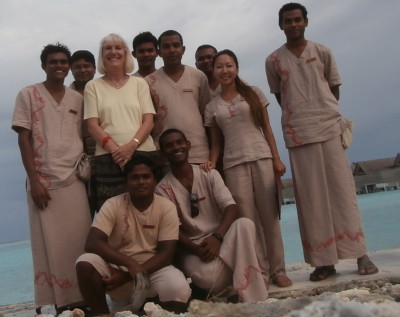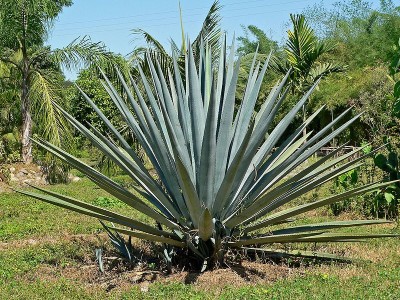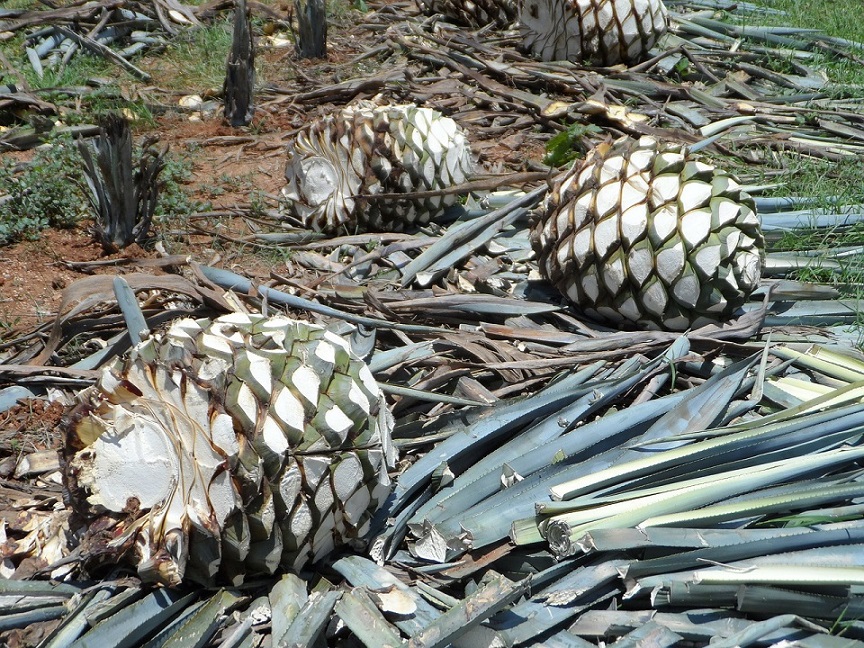
The Modern Butlers’ Journal volume 10, issue 7
International Institute of Modern Butlers
 Message from the Chairman
Message from the Chairman
Apologies for the abbreviated Journal this month: being in the middle of the Indian Ocean on a series of idyllic islands for six weeks has much to recommend it, but does have one significant drawback: on the rare occasion when an Apple laptop may suffer a fatal, inconvenient, and premature implosion, taking the hard drive with it, there are no Apple stores on the horizon to render assistance. Having experienced this juxtaposition of events, we regret to report that the files containing Baron James Shortt’s article on security and Mr. Jeffrey Herman’s notes on silver remain safely ensconced on the desktop back in the USA, and we look forward to them both seeing the belated light of day in the next, August issue.
Butlers in the Media
A look at Jobs for the Future, which includes butlers, you’ll be glad to hear.
And right now, apparently dental assistants in Japan can also be butlers, as can luxury movie house attendants, and tent butlers.
Interesting coverage from NPR on butlers, as well as in the Mumbai Mirror (“Bombay” to any colonists still amongst us).
Butler Training
 The Institute’s trainers are managing to stay on top of the demand for training, consulting, and placement, and enjoying the challenge. Here Ms. Ferry, the Executive Director, stands with some of the graduating Thakurus at Per Aquum Niyama. Thakurus? Exactly our response when we first heard the word. It has been translated as “Butler” in Diveyi, the language of the Maldivian islands, but actually means “warrior hero.” We do see some parallels!
The Institute’s trainers are managing to stay on top of the demand for training, consulting, and placement, and enjoying the challenge. Here Ms. Ferry, the Executive Director, stands with some of the graduating Thakurus at Per Aquum Niyama. Thakurus? Exactly our response when we first heard the word. It has been translated as “Butler” in Diveyi, the language of the Maldivian islands, but actually means “warrior hero.” We do see some parallels!
Butler/Household Manager Sought…
… for a private estate in California
This is a live-out position, with off-site housing provided. It requires hands-on household management and people skills and you’ll also need to be able to fill-in on housekeeping and cooking from time to time. Driving is required, so you must have good driving skills and a valid driving license. Non-US candidates may apply; visa/work permit will be handled by employer. Usual benefits; salary $40-$80K per year, DOE. If you’d like to be considered, send us your current CV/resume with photo, and we will send you a more detailed Job Description.
 Let’s Talk about Spirits, Part 5
Let’s Talk about Spirits, Part 5
by Amer Vargas
Tequila, Part 1 of 2
Today, we enter the warm lands of Mexico, home to internationally recognized Tequila, which can be enjoyed straight or as part of a delicious cocktail.
Tequila owes its name to the place where it comes from, the city of Tequila in the state of Jalisco. Before the Spanish Conquistadores arrived in Mexico during 1521, the Aztec tribes that resided in the country produced a fermented beverage out of the agave plant. One year, the Spanish brandy failed to arrive from home and the Conquistadors decided to satiate their alcoholic needs by distilling agave plants. Later, around 1600, Don Pedro Sánchez de Tagle started the first mass-production of Tequila. The first stages of producing Tequila have remained unchanged since then, due to the hard and irregular nature of the job, so mechanization has not occurred.
The first step in producing Tequila is planting Agave Tequilana Cacti and allowing them to grow for 7-10 years.
Then, when the “Jimador” observes the plant is ripe and ready to be harvested, he uses his coa (a curved knife at the end of a long pole) to chop off the leaves and render a clean core that looks like a large pineapple, from which it derives its name: “piña.” Piñas have an average weight of 90 kilograms.
Harvesting time is crucial in the production of high-quality Tequilas. If the agave plants are not sufficiently ripe, or if they are overripe, the right carbohydrate levels needed during the fermentation process will be missing.
The Piñas are next placed into an oven to bake slowly. This is done to convert the starches into sugars. As the plant cooks and softens, it undergoes a shredding or milling process and a juice, “aguamiel” (which means “honey water”, called that because of its high sugar content and overly sweet taste) is released. This aguamiel is then allowed to ferment in large, stainless steel tanks for ten to twelve days, sometimes with the help of extra yeasts to accelerate and better control its progress.
Next comes double (and sometimes even triple) distillation, a process that completely stops the fermentation and increases the alcohol level to a minimum of 55%.
We shall finish the steps of Tequila production in the next issue.
Until then, enjoy some quiet time with a Margarita! Cheers!
Mr. Vargas is the Institute’s Vice President for Europe and can be contacted via AmerVargas at modernbutlers.com
Of Butlers and Roses, Part 3 of 20
Types of Roses
by GJ dePillis
Let’s review some basic terms describing roses, so you can speak the same language as your gardener.
The AARS (All American Rose Selections) lists these types of roses: Floribunda, Hybrid Tea, Grandiflora, Shrub, Climber, Miniature, and Tree.
- Shrub: simply a rose bush.
- A “rose tree” is a rose bush that has been trained and grafted to have extra “branches” at the top so it has a tree shape.
- Tea rose: Has a single rose on a stem. As can be surmised, these are used for rose hips tea: Take the red berry hips, crush them up and steep in boiling water to make a high vitamin C tea.
- Hybrid flora: Sports clusters of roses instead of single stems
- Mini Floribunda: A bush that is quite small and low, with many tiny flowers. Some gardeners use it as ground cover.
- Grandiflora: Has clusters of flowers
- Climbing roses: These grow long, horizontal canes (stems) and grow “up” at the center about 18 inches. They should be near a wall or fence where the gardener may spread out the long canes and anchor them to the fence. The goal is to eventually create a blanket of blooms to cover the wall or fence.
- ~ Care: Prune climbing roses every three years. Each cane (stem) needs up to 20 feet of horizontal space. To prune them, in the first year, cut off the first bloom. By the second year, they should grow a couple of roses on that same cane, so prune back to the second bud.
- ~ Some climbing roses can be formed into a “weeping” shrub and grow well in zones 5 to 9.
- ~ Noisette: These are very healthy climbing roses with small flowers that bloom in clusters, making them ideal for arches, fences, trellises, gazebos and pillars. The foliage is a glossy light green and has a tendancy to repeatedly bloom throughout the blooming season. They grow well from zones 7 to 10.
- David Austen: These are shrub roses and are pruned like a tea rose. They bloom 6-7 weeks after pruning.
- Dr. Griffith Buck Rose: Dr. Buck was a horticulturist at Iowa State University who developed a rose that could survive temperatures as low as -27 degrees Fahrenheit, while being disease resistant as well as repeat bloomers. The collection contains about 90 varieties.
- Kordes Rose: One of the oldest breeders of roses, they stopped using chemical fungicides in 1990 to create generations of naturally disease-resistant roses.
- Bourbon: Full rose blooms on a vigorous bush. The blooms are usually very fragrant and flower repeatedly, with a strong bloom in Spring. These grow mostly in zones 6 to 9.
Stay tuned for more rose types in next month’s issue of the MBJ.
Ms. dePillis is a freelance contributor to the Journal who is based on the West Coast of the United States. She can be reached via depillis at gmail.com
The Institute is dedicated to raising service standards by broadly disseminating the mindset and skills of that time-honored, quintessential service provider, the British Butler, adapted to the needs of modern employers and guests in staffed homes, luxury hotels, resort, spas, retirement communities, jets, yachts, & cruise ships around the world.








